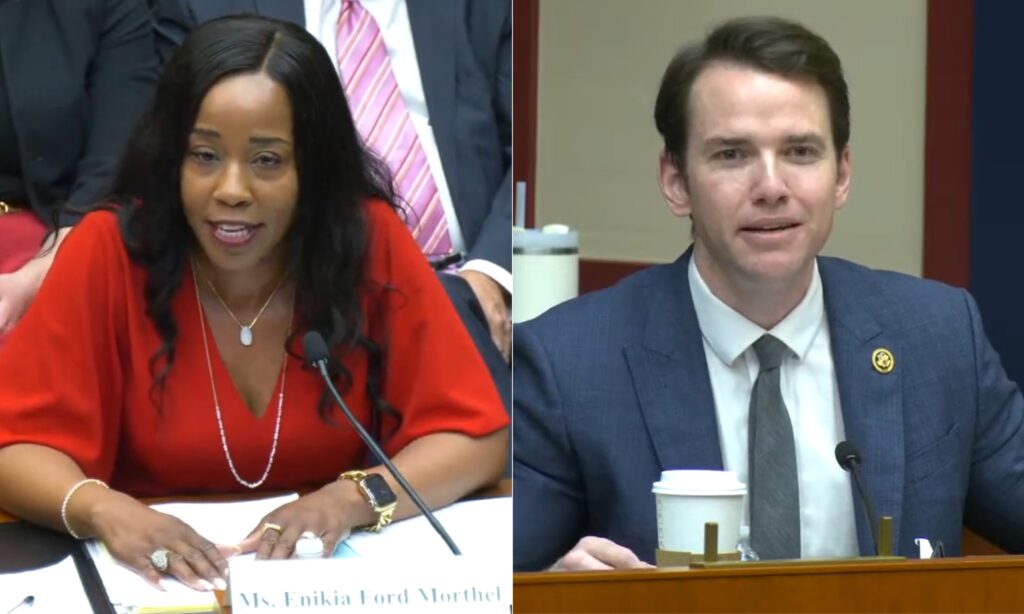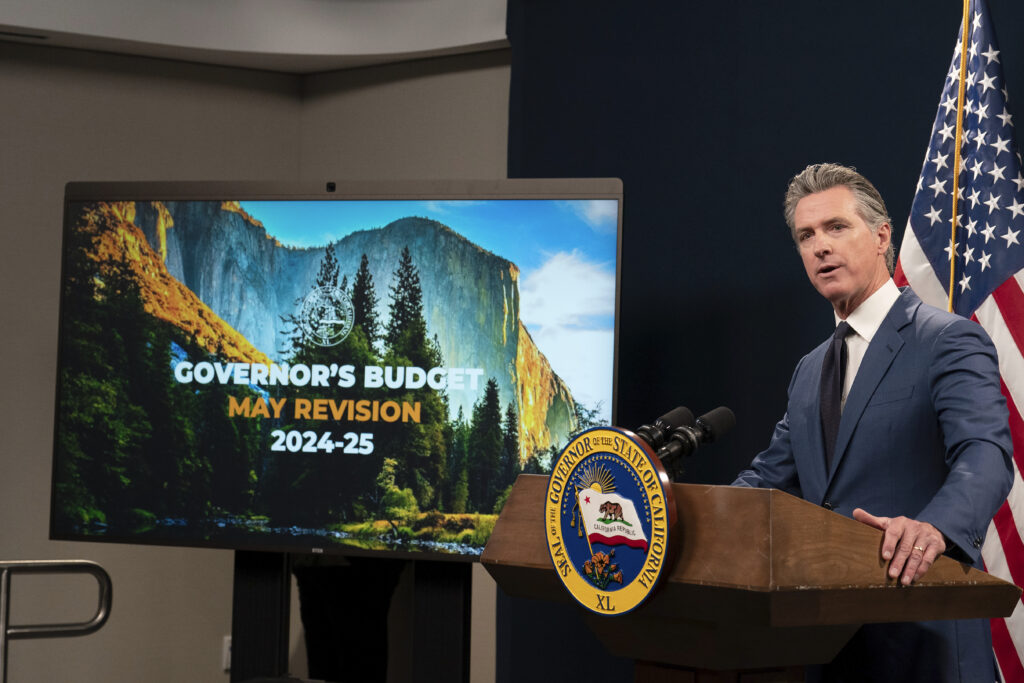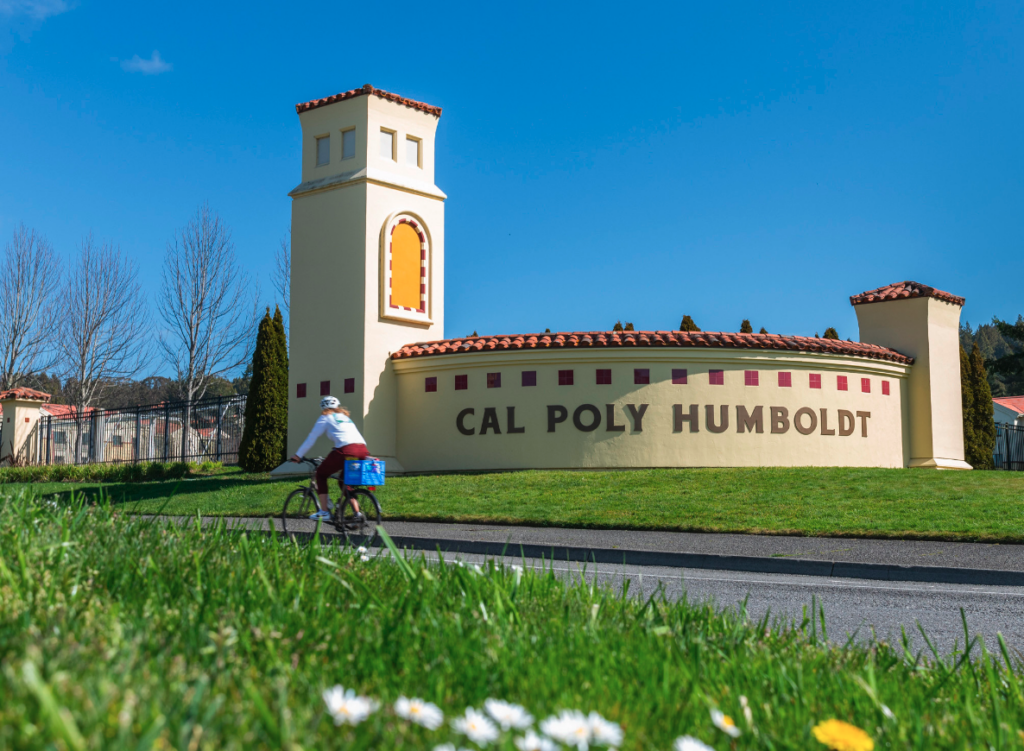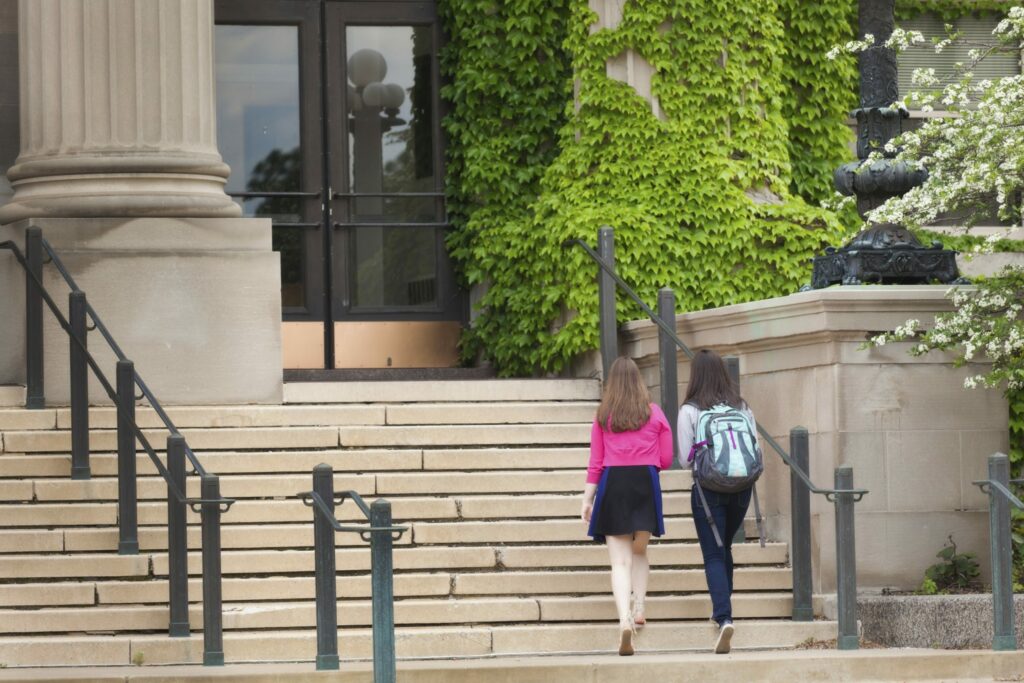Jocelyn Kaiser wrote in Science magazine about the chaos inflicted on the National Institutes of Health by Trump appointees and Elon Musk’s DOGS (not a misspelling) wrecking crew. Large numbers of scientists were fired, some were rehired, then fired again. What was the goal? Was it to sow demoralization and fear? If so, it succeeded.
Since World War II, the U.S. has led the world in science, medicine, and technology, which are important components of our economy. It’s by no means clear why Trump selected people who were determined to disrupt and destabilize the core of the federal science program. Kaiser interviewed many insiders to compile this overview of a machine of destruction, unleashed for unknown reasons on some of our most important science agencies.
On a cool, sunny, mid-April day, the cheerful redbuds and other flowering trees amid the sprawling labs on the National Institutes of Health (NIH) main campus belied the pervasive gloom. Nearly 3 months into President Donald Trump’s administration, NIH in-house scientists and other workers were reeling from mass layoffs of colleagues; the removal of leaders; and limits on travel, communication, and purchasing that have shut the agency off from the outside world, hamstrung experiments, and crushed the community’s spirits.
On that spring day in Bethesda, Maryland, one senior scientist lamented that two star colleagues in his institute were heading back to their native China from NIH, abandoning a destination that had always drawn talent from around the world. “I want to cry,” he said. Another pointed to the abrupt retirement the previous day of a noted NIH nutrition scientist who said the agency had censored his publications and interactions with the media.
The Department of Government Efficiency (DOGE), billionaire Elon Musk’s quasi-official White House enforcer, “pops in and out” of online meetings of senior leaders, the scientists said. Another researcher, who is not a U.S. citizen, mentioned that he has prepared a “deportation plan,” including a company lined up to ship belongings back to his native country, in case he’s fired and loses his work visa.
The atmosphere is one of “chaos and fear and frustration and anger,” said a senior scientist with NIH’s intramural research program who, like others, spoke on condition of anonymity to protect themselves and others from retribution. This scientist added: “It’s this feeling of utter powerlessness and repeated insults.”
A former top NIH official who was forced out believes that’s the intent. “I think the plan is to sow as much chaos as possible. … I think they want a dispirited workforce at NIH so people will just say ‘to hell with it’ and leave.”
It’s working. Hundreds of NIH employees took voluntary buyouts offered by the Trump administration. And at least 25 of the roughly 320 physician-researchers who lead trials of drugs, cell therapies, and vaccines at NIH’s massive Clinical Center are leaving, as are consulting physicians, a researcher there told Science.
In NIH entryways, recently installed portraits of Trump, Vice President JD Vance, Department of Health and Human Services (HHS) Secretary Robert F. Kennedy Jr., and new NIH Director Jayanta “Jay” Bhattacharya have become a forum for silent protests. A photo of tanks rolling through Tiananmen Square during China’s 1989 student uprising was briefly plastered below one set of visages. On a different wall on another day, flyers appeared for a nationwide protest of Trump’s science cuts along with a Post-it note with the word “Shame.” A staff memo sent out the day a Science reporter visited warned of penalties for “damage or destruction of federal property” including “defacement of portraits.”
A researcher who has spent more than 2 decades with NIH’s intramural research program believes the world’s largest biomedical agency will never be the same. “However bad everyone on the outside thinks it is, it is a million times worse. They’re dismantling and destroying everything.”
Along with firing about 2500 of the agency’s 20,000-strong federal workforce and pushing others to retire, Trump officials have used what some call “bureaucratic sabotage” in ways that likely explain why NIH has disbursed at least $1.8 billion less in funding to outside researchers in this administration’s first 3 months than it did in the same time period in 2024. They have canceled more than 800 grants on topics such as HIV research, transgender health, and vaccine hesitancy. NIH, at HHS’s behest, also tried to impose a crippling cut in the overhead payments made to universities that carry out grant-funded research.
More disruption looms, including HHS-demanded cuts to billions of dollars in contracts that fund key support staff and research centers and a White House proposal due any day now that will likely aim to slash up to 44% from NIH’s $47.4 billion budget and overhaul its structure. An agency that once had strong bipartisan support and was seen as the crown jewel of U.S. science, and the envy of the world, now faces a diminished, uncertain future.
I think the plan is to sow as much chaos as possible. … I think they want a dispirited workforce at NIH so people will just say ‘to hell with it’ and leave.
Some on the NIH campus that April day held out hope for Bhattacharya, who has said he wants to “undo some of the disruptions” and get NIH research back on track. Bhattacharya told Science this week, “It’s been a tough period” at NIH, but “I think things have turned around significantly.”
But others see him as firmly aligned with the Trump administration. In recent remarks to the research community, Bhattacharya said he wants to pivot NIH toward Kennedy’s Make America Healthy Again (MAHA) agenda, which focuses on chronic diseases, a shift that could come at the expense of the basic research and infectious disease studies that the agency now funds. “His presentation was distressing on multiple fronts,” says longtime NIH observer Keith Yamamoto, a cell biologist at the University of California (UC) San Francisco.
Others outside the agency share a pessimistic assessment of NIH. “I don’t think there’s any way to sugarcoat the last 100 days. The state of the enterprise is chaotic and it’s in jeopardy,” says Mary Woolley, president of Research!America, a biomedical research advocacy group. “I am terribly worried,” says molecular biologist Shirley Tilghman, former president of Princeton University. “It will take years to undo the damage that is being inflicted right now.”
THE TRUMP ADMINISTRATION’S interference with NIH began the day after he took office, when HHS political appointees imposed a “pause” on communications from its 27 institutes and centers. Past administrations had sometimes briefly halted press releases and other communications, but this time, NIH extended the pause to public meeting attendance by scientists who handle grant programs and reviews. That meant meetings were abruptly halted, sometimes minutes before the start time or even midway through. In-house scientists and grants staff were also told to freeze hiring, purchasing, and travel. Days later, on 27 January, the White House froze grant payments from all federal agencies.
That first week, Trump appointed an acting director to replace Monica Bertagnolli, who had stepped down as NIH director days before the presidential transition. But instead of veteran Principal Deputy Director Lawrence Tabak, who had previously held the acting role, he chose Matthew Memoli, a longtime influenza researcher with NIH’s intramural program. Memoli had questioned the need for widespread COVID-19 vaccinations during the pandemic. That put him at odds with Anthony Fauci, then director of the National Institute of Allergy and Infectious Diseases (NIAID) and a frequent target of conservatives, and may have elevated Memoli in the administration’s eyes.
On Friday of the second week, the director’s office, known as Building 1, received an order to post a notice imposing an immediate 15% cap on indirect costs, the overhead payments the agency includes with each grant, to save $4 billion. Former NIH officials say they were alarmed by the sudden memo, which had multiple errors and directly conflicted with congressional restrictions on the agency’s indirect costs rates. By Monday, universities had won a court order halting the cap, arguing it was illegal.
That same week, the first signs of a widely expected purge of NIH leadership emerged. Tabak was called to a meeting at HHS headquarters in downtown Washington, D.C., and told he was reassigned to a job there and would lose his NIH lab. The 25-year NIH veteran announced his retirement later that day. Deputy Director for Extramural Research Michael Lauer, who oversaw NIH grant policies, abruptly retired later that week amid rumors he, too, would be reassigned. Before he left, Lauer ordered staff to lift the NIH grant freeze after a court ruled it was illegal.
Next came what many dubbed the “Valentine’s Day massacre”—the dismissal of nearly 1200 NIH employees who, along with thousands of other federal workers, had a “probationary” status because they were new to the agency or, in many cases, were veterans but had recently changed positions. Among them were crucial Clinical Center staff along with more than a dozen tenure-track investigators. Illustrating the haphazard nature of the firings, the clinical staff and animal care workers were quickly rehired when it became clear they were essential, and the firings of the tenure-track scientists were also eventually reversed. HHS also abruptly halted routine renewals of the many intramural scientists on term-limited appointments—a policy reversed after an appeal from Memoli but that NIH researchers say has recently resurfaced.
AS FEBRUARY ROLLED into March, a new threat crystallized for the university scientists and other extramural researchers who receive the bulk of NIH funds: HHS ordered NIH to cancel hundreds of grants that allegedly violated Trump executive orders barring funding for topics that touched on diversity, equity, and inclusion and LGBTQ health. The cuts included HIV trials in South Africa, training grants, health equity and environmental studies, as well as work on vaccine hesitancy and COVID-19.
“It was soul sucking every time to see those lists of grants that were vulnerable,” says Emily Erbelding, an NIAID division director who was put on leave this month. NIH letters terminating the grants stated that the work “no longer effectuates agency priorities”—language meant to satisfy recently revised grant policy requirements.
The cuts have made a huge dent in some research fields, such as transgender health, which has lost at least $157 million in unspent NIH funding. Although researchers can appeal terminations, and a few cancellations have been reversedwithout explanation, some scientists have already shut down their programs. After losing $5 million in research and training grants studying ways to improve health care for Alzheimer’s disease in sexual and gender minorities, social scientist Jason Flatt of the University of Nevada, Las Vegas laid off his two full-time staff and is scrambling to find other support for five graduate students. “This has been my life’s work,” says Flatt, who now expects to pivot to less politically fraught Alzheimer’s studies.
It will take years to undo the damage that is being inflicted right now.
At some top research universities all NIH funding, regardless of its focus, has become leverage as the Trump administration pressures the institutions on matters unrelated to science. First the White House killed NIH grants, and other federal funds, to Columbia University in March saying it had not properly combated antisemitism in the wake of campus protests against Israel’s bombing of Gaza. Columbia has been negotiating policy changes, so far without winning back its funding, more of which was frozen. At dozens of other universities NIH funding is threatened. Harvard University, facing the loss of at least $2.2 billion in multiyear grants from NIH and other agencies, has called the demands an attack on academic freedom and on 21 April, filed a lawsuit challenging the cancellations. Bhattacharya told Science he supports the freezes because “these institutions ought to obey the civil rights laws.”
Much of the money flowing from NIH to universities supports early-career researchers. Other changes at the agency also threaten the U.S. pipeline for scientists. Virtually all NIH-funded training programs aimed at attracting underrepresented groups to science are now gone. “I’m concerned that these events are very likely to affect who decides to stay in science and we will lose important and necessary scientific talent,” says cell biologist Needhi Bhalla of UC Santa Cruz, who has mentored several trainees supported by these awards.
THE FIRST DAY OF APRIL, Bhattacharya’s start date, brought another wave of about 1300 job cuts at NIH as part of Kennedy’s plans to downsize and centralize operations at all HHS agencies. The Food and Drug Administration (FDA) and the Centers for Disease Control and Prevention (CDC) faced similarly huge reductions in force. That same week, four institute directors and one acting director at NIAID and other NIH institutes were told they had been put on leaveand in most cases offered reassignments to sites with the Indian Health Service far from their current homes. (None has publicly resigned or accepted the reassignment so far.) Other NIH leaders, including the chief of the agency’s well-regarded international center and some close to Fauci, were removed as well.
The HHS-imposed staff cuts, which ignored a plan developed by NIH leadership and submitted by Memoli, wiped out many communications, acquisitions, human resources, and policy offices. They swept up intramural scientists who many thought would be protected, including 10 tenured neuroscientists who Kennedy later said were fired by mistake—one of many acknowledged errors at NIH, CDC, and FDA. (As this story went to press, these scientists were back in the lab but had still not been officially reinstated.)
Even NIH’s biggest supporters acknowledge that some parts of the massive agency could be improved or made more efficient through centralization of necessities such as information technology. But as one senior scientist put it, “There was no planning.” Institute leaders are now scrambling to get functions handled by the disbanded offices operating again.
However bad everyone on the outside thinks it is, it is a million times worse. They’re dismantling and destroying everything.
Some of the internal restrictions have recently been eased. Peer-review meetings to consider grant proposals have resumed, as well as institute council meetings, which do the second level of funding review. Bhattacharya quickly lifted the freeze on travel and purchasing.
Yet the staff shortages are still taking a toll. One intramural scientist had to cancel a talk at a local university because his slides, submitted 30 days earlier, had not yet been approved. The few senior scientists who have rare agency credit cards are swamped with requests to buy lab supplies. “The backlogs are crazy,” a postdoc says—6 months for mice or a microscope part that would normally take 2 weeks. Researchers are getting by with workarounds such as sharing antibodies.
With continuing losses of key technicians, physicians, and administrative staff, the Clinical Center now lags in lab testing and faces difficulty bringing in patients from outside the United States, who are needed for studies of rare diseases. Its patient population has dropped by at least 30% since Trump took over, to below 70 in April compared with more than 100 during the same month in past years, a senior clinical investigator there tells Science. The Clinical Center’s Steven Rosenberg, a pioneer in using a person’s own immune cells to fight their advanced cancer, says the staff cuts and purchasing delays mean up to 2-month delays in treatment for his seriously ill patients and fewer treated overall. “We’re working at a much slower pace,” he says.
WHETHER THINGS WILL get better at NIH now that it has a permanent director is anyone’s guess. Although he has said he backs research on health disparities, which his own work has examined, Bhattacharya supports the Trump administration cuts to diversity programs, which he calls “a political ideology.” And he has brushed off killing HIV grants in South Africa as part of a shift of resources to support Kennedy’s focus on Americans’ health. “I’m concerned that he has little autonomy,” Yamamoto says.
Rosenberg, who has met with the new director, is more optimistic: “He seemed very reasonable and eager to improve things,” he says.
More reshaping of NIH could be coming. Career staffers in Building 1 have been replaced with political appointees with no experience with research agencies. DOGE and HHS are expected to approve new grant solicitations, and the agency this week began to absorb an HHS-mandated $2.6 billion cut in contracts that fund vaccine scientists, equipment maintenance, long-running heart disease studies, and much more.
Kennedy’s influence is a particular worry. The HHS director ordered NIH to launch a study of the causes of autism, which Kennedy has falsely blamed on vaccines, although he says other “environmental” causes could have a role. Another study the White House and Kennedy have told NIH to instigate will explore “regret” among transgender people who undergo hormone treatments. “The conclusions seem predetermined,” says biochemist Jeremy Berg of the University of Pittsburgh, former director of NIH’s basic science institute and former editor-in-chief of Science. “It undermines the credibility of NIH particularly because it seems designed to drive a particular political agenda.”
The Republicans in control of Congress so far have taken no action to protect NIH, although Senator Susan Collins (R–ME) said today at a hearing on the state of the biomedical research enterprise that the cuts to NIH scientists and grants “must be reversed.” Collins chairs the committee that oversees NIH’s budget and held the hearing in partnership with the panel’s senior Democrat, Senator Patty Murray (WA). Murray has protested the many NIH cuts, most recently to NIH’s landmark Women’s Health Initiative, which HHS said it had reversed after an outcry. Congress will also decide whether to go along with Trump’s proposed, radically smaller NIH budget and reorganization plan. Indirect cost payments will almost certainly be revisited and trimmed. “We are undoubtedly at an extremely challenging time for the biomedical research community,” says Jennifer Zeitzer, deputy executive director of the Federation of American Societies for Experimental Biology.
For now, the biomedical research community and NIH staff are hoping the resumption of council meetings will allow grants to flow out again—although staff shortages will be an impediment. Disbursing NIH’s full budget before the end of the fiscal year on 30 September “is going to be a near impossible feat for the number of people left,” says a former cancer institute official. If so, hundreds of millions of dollars in congressionally approved funding meant to identify new medical treatments and test them in patients across the U.S. and world will go back to the Department of the Treasury.
Like those on the NIH campus who spoke with Science, many of the agency’s former leaders are also not optimistic about the next 100 days, or the rest of Trump’s term. Geneticist Francis Collins, NIH director from 2009 to 2021 who abruptly retired in late February and closed his NIH lab, is one. “Reckless decisions will disrupt a noble institution with a stunningly positive track record, drive young scientists to leave the country, and damage the future health of the nation.”
With reporting by Sara Reardon.
Update, 2 May, 11:55 a.m.: Additional comments from NIH Director Jayanta “Jay” Bhattacharya, from an interview after this story was posted, have been added.

















